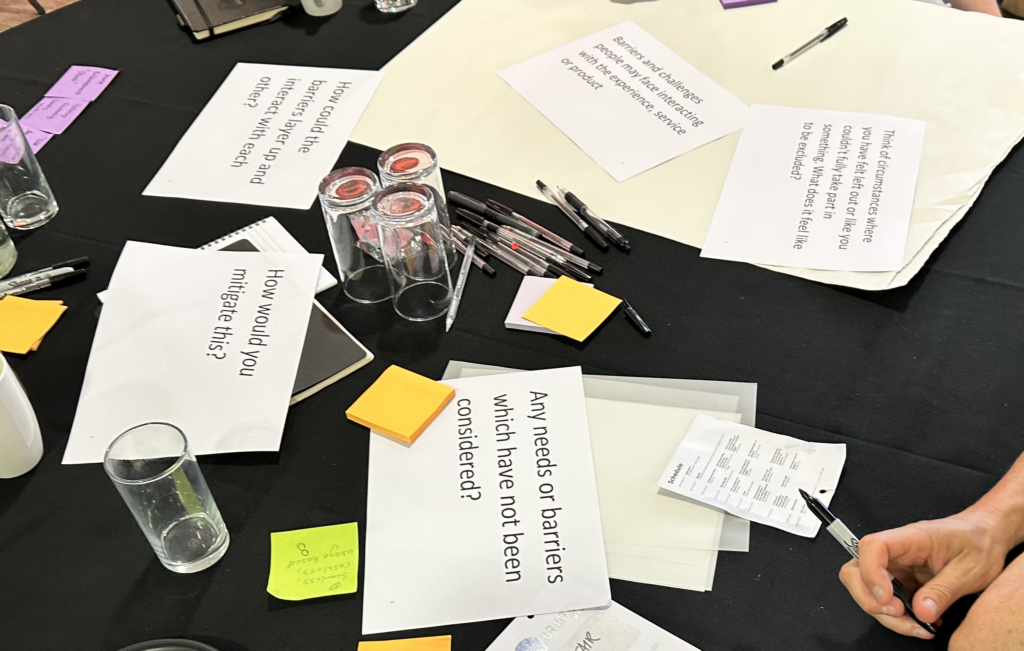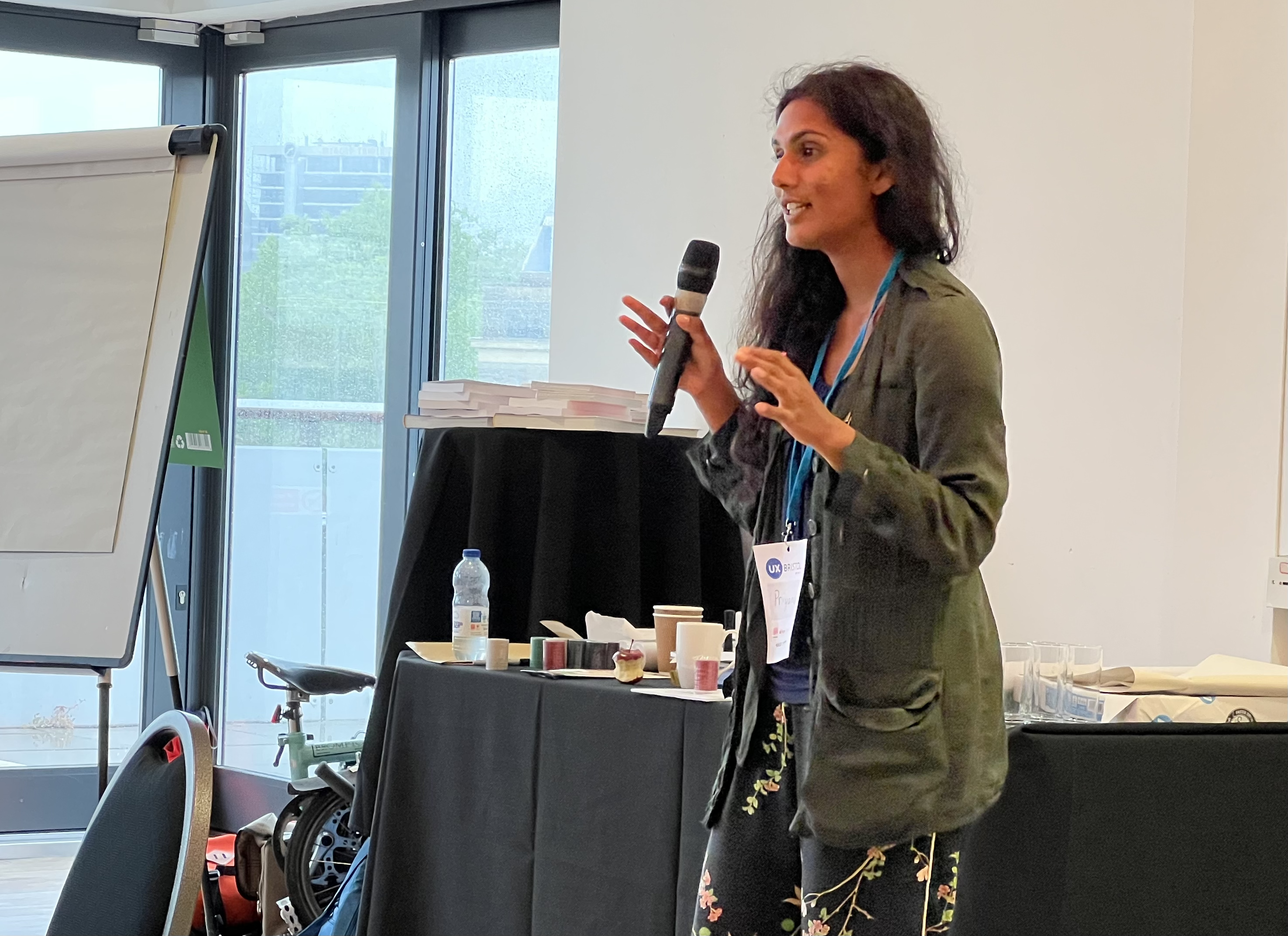Intersectionality in inclusive design, a more holistic approach to accessibility
In this workshop, Priyanca D’Souza explored how different combinations of barriers could impact a person’s experience, and how we could mitigate some of these barriers or try to address them…
Priyanca opened by clarifying that when she says “accessibility” she doesn’t mean “technically compliant”. You have to step back and take a wider view. Disabled people do not have extra hours in the day to do stuff, so making something technically compliant that requires lots of clicks in order to be accessible is not fair and equitable.
We often separate out different accessibility needs, but people may have multiple access needs. However, a lot of software is not designed to take this into account. Intersectionality takes these competing needs into account.
In our first workshop activity, Priyanca asked us to:
- Think of some circumstances where you felt left out and what it felt like to be excluded
- Consider what barriers and challenges people might face when interacting with the experience, service or product
- Consider how the barriers layer up and interact with each other
- Think about how you would mitigate this

Feedback included:
- Feeling left out makes you feel self conscious, exposed or vulnerable. These feelings can lead to you to become quite self-critical and frustrated
- Users might have language, educational, socio-economic and cultural barriers, in addition to physical access needs
- There may be baked-in assumptions or bias in a service, or categories in a product that don’t apply to you
- There can be financial impacts from failing to make a service accessible in terms of time lost
- Businesses choosing to go cashless or card-only can layer up barriers and exclude different users
- Being left handed can lead to pain if asked to use a product like scissors (even though these can be made accessible to left handed users)
- Often you have to spend time educating people around you about the barriers you face, which can be time consuming
- Often we can concentrate on our own discomfort rather than the discomfort of those affected by a problem (e.g. when using a microphone, which can make people feel uncomfortable)
- Technology that should help reduce barriers can be unreliable
- Venue and conference present lots of issues, such as challenges around catering arrangements and audio
- Exclusion is often negative, but it can make you think and make you determined to solve these issues
Priyanca asked us to move around to other tables and identify any needs or barriers which have not been considered by the other groups. Atendees identified issues like social anxiety, religious beliefs, sexual orientation, being from a rural environment, and not being able to drive.
Priyanca concluded by emphasising that this session was designed to help us to think about all the different barriers and encouraging us to take three different barriers and think about how these would interact if they all occurred at once. This gives us a new lens when we think about barriers and how to design services and products that are truly accessible.
About Priyanca
Priyanca is a Senior User Researcher in the public sector, specialising in Accessibility and Inclusion. She’s been experimenting with and using assistive technology for well over ten years. This has involved a lot of creative problem solving, openness and resilience. She can look at experiences through the lens of how access needs and assistive tech are going to interact with different touchpoints.
She aims to use her lived experience of access needs to embed inclusive practices within teams and drive forward inclusive and ethical design for users. Enabling people to empathise with the barriers our users can face and finding opportunities to alleviate and change things to make experiences better.
She is fascinated by the impacts different conditions can have on cognition, behaviour, people’s interactions and experiences of the world. She has a background in Cognitive Neuroscience and Psychology, which she combines with lived and varied practical experience.



